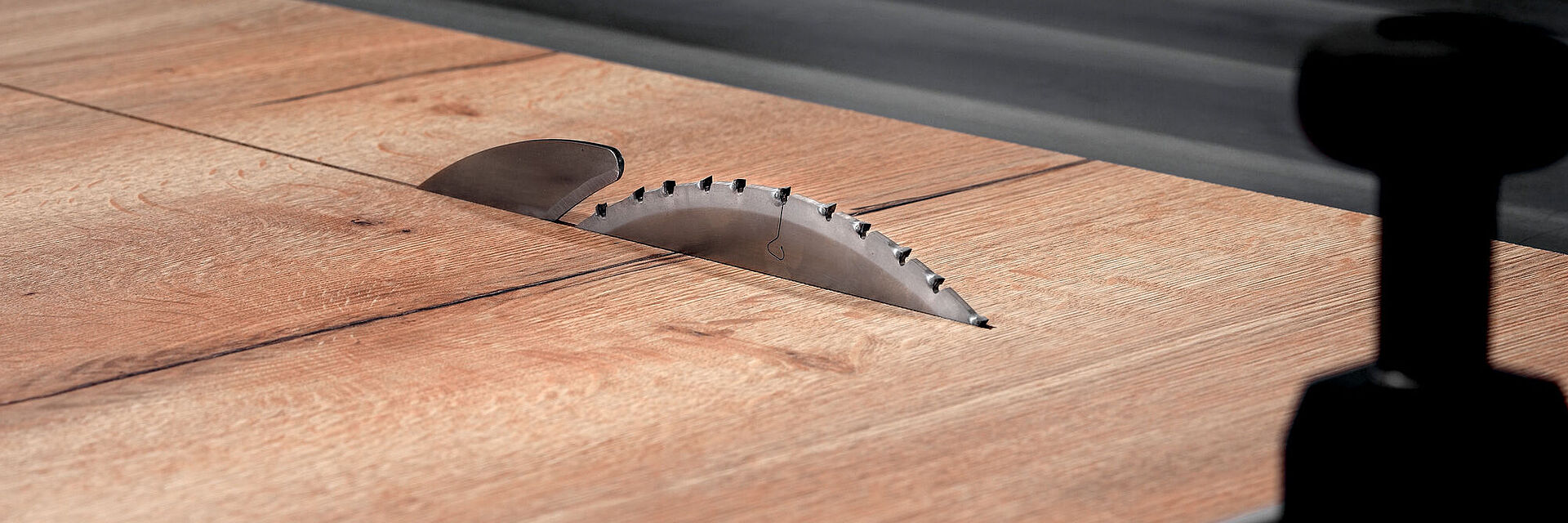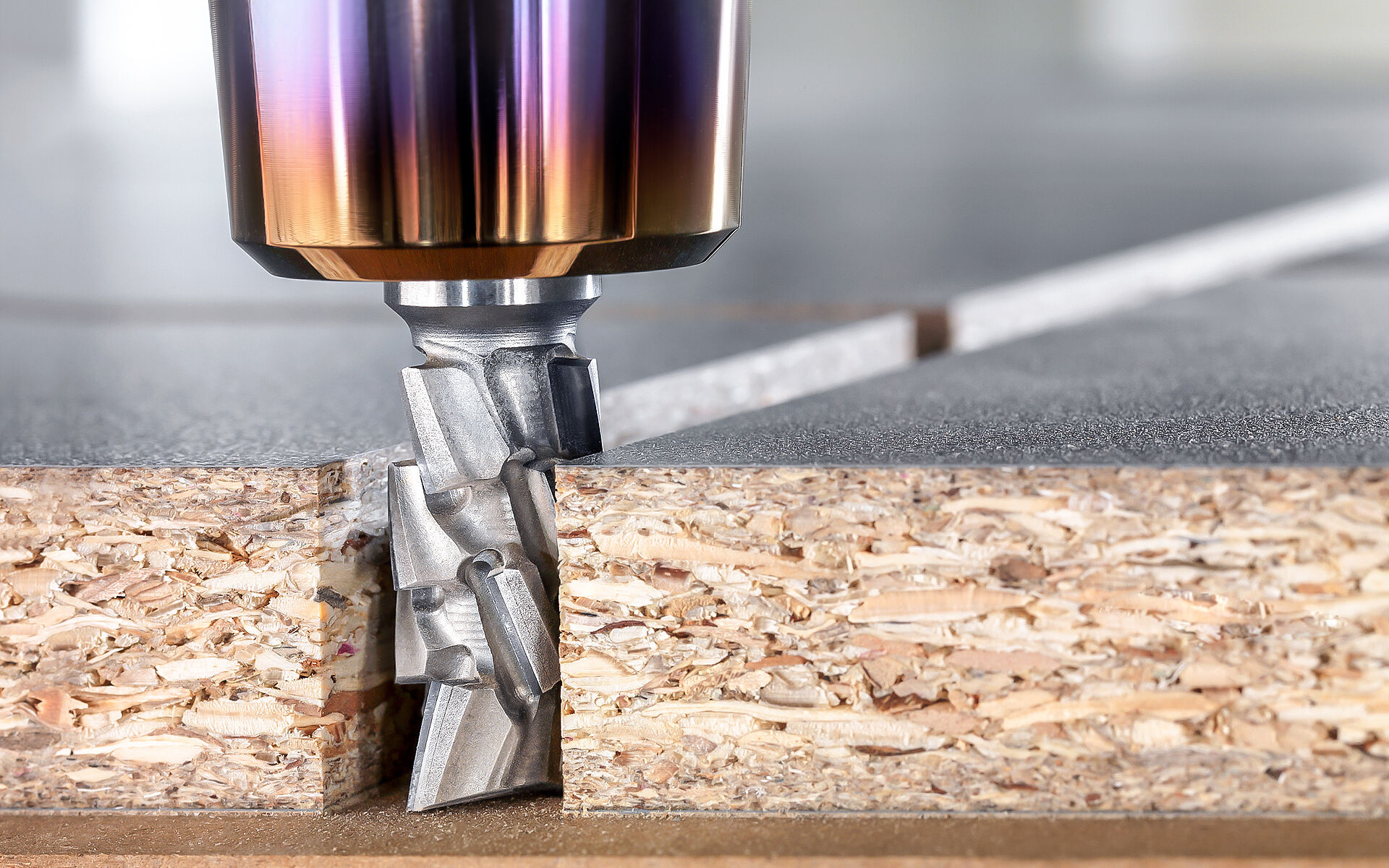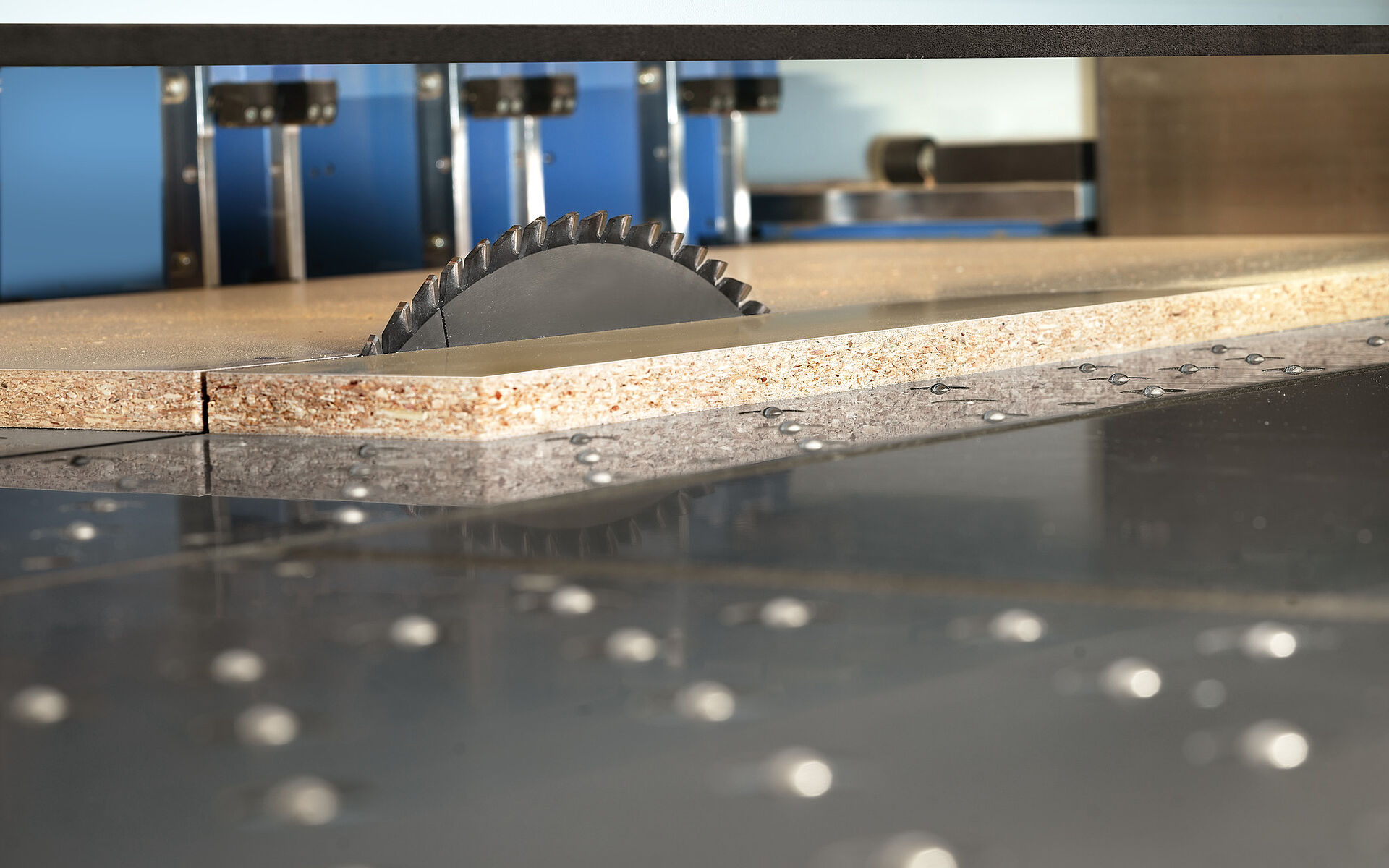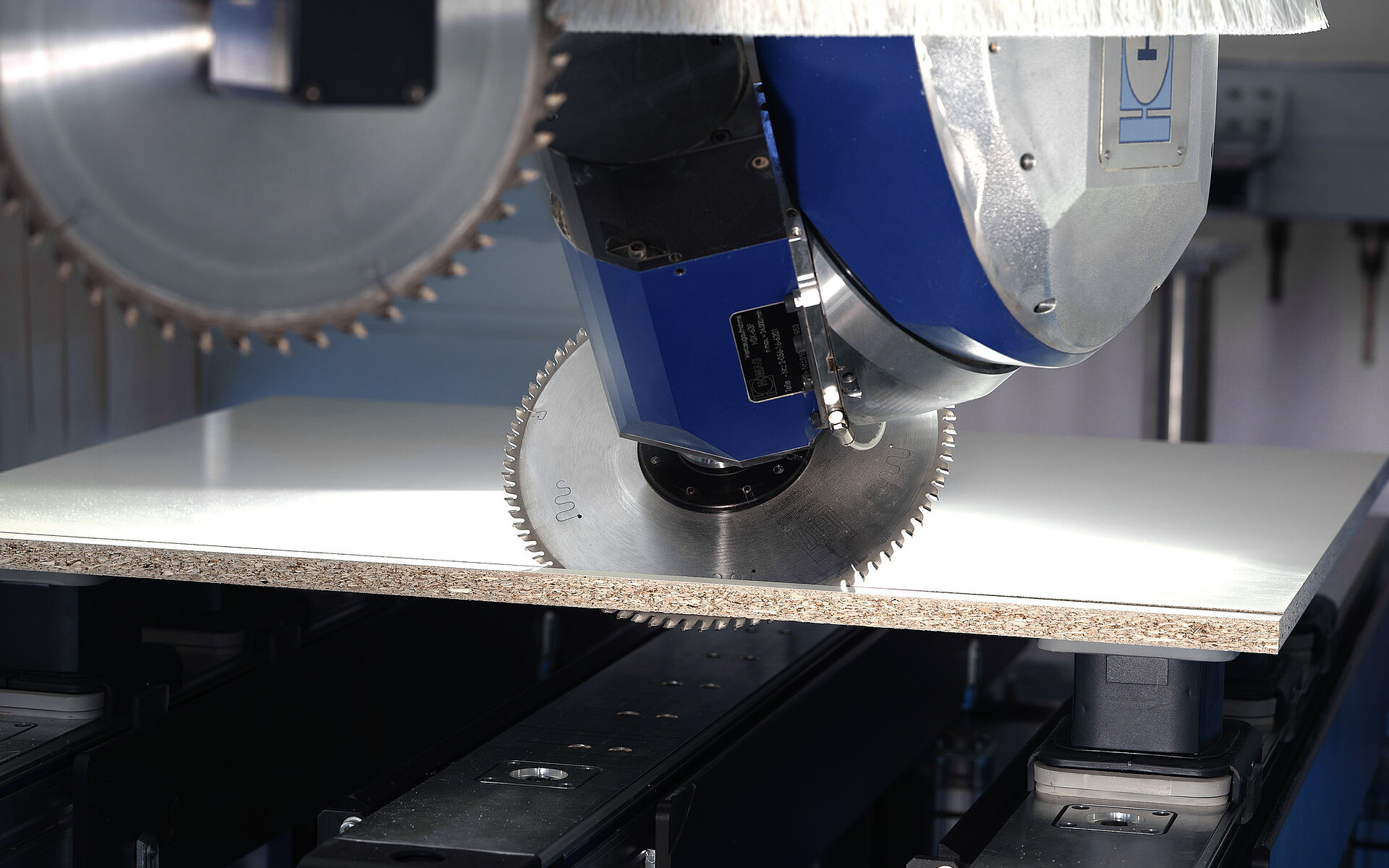One's own home is the center of one's life. Not least due to the life-changing events of the past months, a large part of the population spends more time within their own four walls than ever before. In many places, this has increased the desire for a relaxing and comfortable home as well as high-quality interior design. Colors inspired by nature, natural materials and a clear, reduced design are popular.
A modern home is an oasis of well-being, a workplace and a place of retreat all at the same time, which means that the functions of furniture pieces sometimes blur into one another. Furniture today must not only be beautiful, but multifunctional and meet several requirements at the same time, without neglecting the aspect of coziness. To ensure that a piece of furniture can meet all requirements in terms of design, materials, size and functionality, the trend is moving away from a one-size-fits-all look to individual, mostly handcrafted solutions with a variety of user properties.
For craftsmen, this opens up almost unlimited design possibilities, but also new challenges. The number of materials to be processed has increased significantly, and combinations of natural wood with high-tech finishes are the norm. One example of such high-tech finishes is anti-fingerprint (AFP) coatings. These are preferably used in the area of kitchen furniture, but also more and more in classic furniture construction or interior design. In the recent past, modern, puristic designs with high-gloss and matte lacquer finishes had become the trend, but the end user quickly recognized the disadvantage of these noble-looking surfaces: Fingerprints and grease residues are visible immediately after touching them and the beloved designer furniture quickly looks unattractive. In contrast, the so-called anti-fingerprint finishes, which make fingerprints invisible thanks to a special coating, are becoming increasingly popular.
In addition to such high-tech finishes, solid wood furniture or furniture with real wood finishes are also very much in vogue. After all, wood is the ideal and most natural material for a cozy and sustainable interior design and can be perfectly combined with a wide variety of materials and colors.
For craft businesses, therefore, the question arises as to how such an extensive range of materials can be machined in the best possible way. Always under the condition of ensuring perfect quality on the workpiece and the highest possible efficiency, productivity and flexibility within the machining process. Above all, however, users must ask themselves which tool solutions are suitable for this in order to be able to produce successfully.
Solution 1: Sizing with scoring and main circular sawblade
The most traditional processing method is cutting with the help of a sizing saw. Craftsmen attach particular importance to the quality of the cut. As perfect as possible with tear-free edges on both sides and clean cut areas in all panel materials and decors, so that time-consuming reworking can be avoided. To achieve this, it is recommended to use a new or just reconditioned circular sawblade before sawing panel material with sensitive finishes (such as anti-fingerprint materials). To achieve a perfect top edge, the radial projection of the circular saw blade to the panel should be set at up to ten millimeters. To achieve a perfect bottom edge, the use of scoring circular sawblades is highly recommended. In addition, it is advisable to place the panel on the saw table with the visible side facing up. In this way, perfect work results can be achieved and the lifetime of the circular sawblades used can be maximized.
Solution 2: Combining different cutting materials for panel sizing
Panel sizing saws are becoming more and more common in craft workshops. For a perfect cutting edge without further sizing steps, coated wood materials, such as chipboard or MDF as a single board, must first be pre-scored on the bottom side with a scoring circular saw blade and then sawn with a main circular sawblade. To ensure that the main and scoring circular sawblades function optimally, it is absolutely recommendable to match the cutting widths of the two circular sawblades to each other and also to service them in pairs after the end of the tool life.
Many carpenters implement this utilization concept in their machining processes on a daily basis. However, there is the possibility to save costs, which many users are hardly aware of. If, instead of a carbide scoring sawblade, a diamond-tipped variant is used together with several main circular sawblades, tool costs can be significantly reduced over longer periods of time. Specifically, it is recommended to use up to ten carbide main circular sawblades together with one diamond scoring circular sawblade. Due to the significantly higher wear resistance of diamond cutting materials, these scoring circular sawblades achieve a much longer tool life than the main circular sawblades with carbide tipping used at the same time. Thus, the scoring circular sawblade remains in the machine after the main circular sawblade has reached the end of its tool life. This means that only the main circular sawblade needs to be replaced and reconditioned. Time-saving processes and additional savings in tool costs are the result. An additional saving effect: the main circular sawblades with carbide cutting edges can be resharpened several times until the end of the tool life of the diamond scoring circular sawblade. The resulting loss of cutting width can be compensated simply and without great additional expense by changing the scoring depth. This procedure allows the maximum tool life to be achieved on all tools and costs to be saved.
A perfect example of how this works is the combination of RazorCut PLUS circular sawblades and DP scoring circular sawblades from Leitz. With its cutting geometry designed for finish cutting, RazorCut PLUS ensures perfect, breakout-free edges as well as smooth and score-free finishes, even in delicate decors. In combination with the diamond scoring circular sawblades, users can save costs and permanently achieve the highest quality when sawing.
Solution 3: Stationary technology (CNC)
CNC technology has become established as a manufacturing concept in many craft businesses, and the trend continues without interruption. Finally, complex workpieces and a wide variety of shapes and designs can be produced quickly and easily with the help of CNC machines. After all, it is possible to machine almost all coated and uncoated wood materials, solid wood elements, compact panels or plywood with shank or jointing cutters and circular sawblades. However, the quality of the machining result always depends on the machining strategy used and the tool systems used for this purpose.
CNC sizing with shank or jointing cutters
The aim of sizing with jointing cutters is to achieve tear-free edges on both sides. This is best achieved with diamond-tipped tools that have alternating shear angles - i.e. inclined cutting edges. However, this shear angle may only have a certain minimum size in order to reduce the cutting pressure. Tools with too large shear angles produce rough and porous, pitted finishes on chipboard with a loose medium layer. Especially with laser edging, this can lead to problems with edge adhesion or water resistance tests. Another argument against using such tools is the significantly higher purchase and maintenance costs. This is because tool systems with a high shear angle are usually equipped with extra-long cutting elements. The use of diamond cutting edges therefore causes high costs in terms of both purchase and resharpening.
Studies over many years have shown that the best machining results in terms of perfect edges and tear-free medium position are best achieved with tools that have an shear angle of 50 degrees. This is the only way to produce a perfect cutting result during jointing and prevent process costs from rising unnecessarily. For example, with the EdgeExpert cutting tools from Leitz.
In addition to the selection of the optimum tool, the processing strategy also has an important influence on the processing quality during sizing. It is therefore recommended to pay attention that the edge and straight cutting strategies are also optimized. Users who are dealing with this topic for the first time are well advised to have an experienced contact person with profound knowledge of materials, tools and machining processes at their side.
Mitre cutting with CNC machines
Mitre sawing is one of the most demanding machining operations in the furniture and interior design industry. On 5-axis machining centers or with special CNC sawing units, inclined saw cuts at all desired angles can be produced very efficiently. In practice, it has been proven that circular sawblades specially designed for mitre cuts are an absolute necessity for this field of application. The main difference to conventional circular sawblades is their small cutting width and the simultaneous high axial run-out quality. These technical features are of great importance here in order to avoid break-outs on the pointed side of the mitre. Especially with very tapered mitres - such as 60 degrees - the slightest inaccuracy in the overall system significantly worsens the machining result.
Another important point is the use of the right machining strategy. In this case, it is recommended to score the panel two millimeters deep on the inside edge with feed in a first cutting movement. Subsequently, the cut-off is performed in the counter-rotation. In this way, CNC users achieve the perfect cut. Free of tear-out on both edges and in the cut area without defects.
Examples of such circular sawblades, especially for mitre cuts, are the Katana carbide-tipped circular sawblade and the WhisperCut diamond-tipped circular sawblade from Leitz. Both Katana and WhisperCut enable perfect cutting results in all common materials thanks to their small cutting width and particularly smooth running characteristics.
The Nesting process
In the so-called nesting process, nested shapes are cut from panel-shaped materials with the help of shank tools. Especially with delicate parts and high feed rates, CNC users are regularly faced with the challenge that the milled parts are displaced and damaged by the high-speed cutter during cutting. The vacuum of the machining table is not sufficient to balance the resulting forces and prevent the manufactured parts from slipping. The use of small tool diameters can help here. On the one hand, this reduces the cutting forces, but much more important are the smaller cutting grooves that are created. If, for example, the cutter diameter is reduced from 16 to 12 millimeters, this corresponds to a 44 percent reduction in the cutting volume. So the less material is removed during nesting and the smaller the resulting cutting grooves are, the less this weakens the vacuum performance on the machining table and the workpieces are held firmly in place.
With its nesting cutters, Leitz offers an extensive and powerful range of tools for such challenges. With diameters starting at 10 millimeters and, depending on the version, suitable for feed rates of up to 35 m/min, it is perfect for delicate and, above all, fast nesting - ideal for machining plywood, compact laminate, chipboard or MDF.
Depending on the machine equipment and machining process, a wide variety of tooling solutions and machining strategies are used in furniture production or interior design. The variety of materials and the demands on materials and end products are constantly growing, but the machining processes themselves will hardly change in the coming years. For this reason, universally applicable tools with maximum performance are becoming increasingly important in the industry. After all, "time is money" and "quality pays off" will continue to apply in the future. More efficiency, more flexibility and more productivity in manufacturing therefore not only helps to save money or to increase output quantities, but also in the field of tool maintenance these slogans will increasingly be aspects to be considered in the future. Craftsman-oriented furniture manufacturers and interior designers will take this into account in their future business plans. It's good to have a tooling partner at your side who can provide suitable tooling solutions, demand-oriented services and a great deal of knowledge about processes, machines and materials. For more efficiency, productivity, flexibility and quality in the trade.
A technical report on current challenges in the trade and the associated processing solutions by Ing. Christian Wimmer, B.Eng. MBA (Leitz Industry Manager Furniture and Interior Design) and Dipl.-Ing. Zeljko Pekec (Head of Application Technology Leitz, Riedau).



